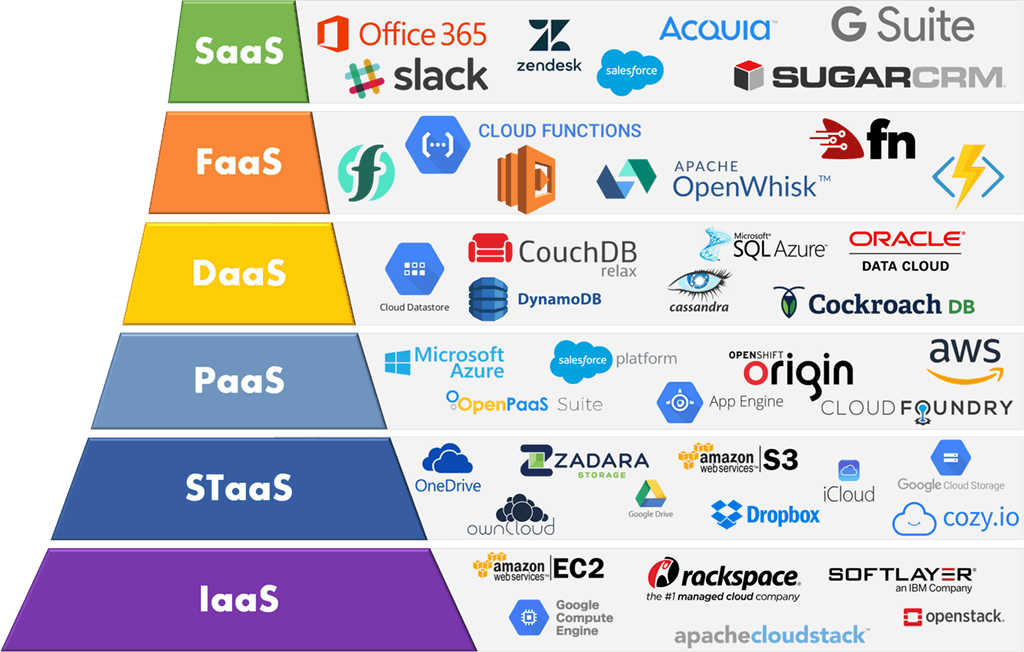Using the Potential of Cloud Providers for One-upmanship in the Market

Benefits of Cloud Provider

Cost-efficiency is one more significant advantage of cloud solutions, as firms can stay clear of big in advance financial investments in equipment and software application. Instead, they can opt for a pay-as-you-go model, only spending for the sources they eat. This cost-effective approach allows organizations to allocate financial sources extra strategically, buying various other areas that drive growth and advancement. Generally, the advantages of scalability, cost-efficiency, and flexibility make cloud services a useful property for firms looking for a competitive side in today's dynamic market landscape.
Cloud Movement Approaches
Cloud migration calls for meticulous preparation and smooth implementation to make sure a smooth transition of electronic properties to cloud-based atmospheres. Organizations beginning on this trip must initially perform a comprehensive evaluation of their current IT infrastructure, applications, and data to figure out the most ideal migration technique. One typical approach is the "Lift and Shift" technique, where existing systems are relocated to the cloud without significant modifications. This approach uses a fast migration process but may not totally leverage the benefits of cloud-native features.
Additionally, the "Replatforming" technique includes making minor adjustments to applications to enhance their efficiency in the cloud environment. This technique strikes a balance between speed and optimization, enabling companies to profit from cloud capacities while reducing disruptions.
For even more facility systems, the "Refactoring" approach, additionally understood as "rearchitecting," involves redesigning applications to be cloud-native. While this technique requires even more time and resources, it can take full advantage of the advantages of scalability, versatility, and cost-efficiency that cloud platforms provide.
Ultimately, picking the ideal cloud movement approach depends upon factors such as the company's objectives, budget plan, timeline, and technical demands. By thoroughly reviewing these considerations, services can successfully shift why not try here to the cloud and get an affordable edge on the market.
Enhancing Information Safety Measures
After implementing cloud movement techniques, organizations should prioritize boosting information security gauges to protect their electronic assets effectively. Cloud Services. Data safety is paramount in the electronic age, specifically when leveraging cloud services that involve transferring and keeping sensitive details.
Routine safety and security audits and continue reading this vulnerability evaluations are vital to determine and address any powerlessness in the data safety infrastructure promptly. Training employees on ideal methods for data protection and applying stringent access controls can also mitigate the threat of internal information violations. By buying durable data safety and security actions, organizations can instill trust amongst their stakeholders and clients, eventually getting an one-upmanship in the marketplace.
Leveraging Cloud for Scalability
Implementing cloud services allows organizations to dynamically readjust sources according to demand, boosting scalability and maximizing operational performance. Scalability in the cloud context refers to the capacity to rapidly and quickly rise or decrease resources as required, supplying companies with the versatility to satisfy transforming demands.
Furthermore, leveraging cloud scalability enables organizations to respond without delay to market variations, seasonal needs, or unforeseen growth, ensuring undisturbed solution distribution without incurring unneeded prices. By scaling resources up or down in real-time, companies can maintain optimum efficiency degrees while regulating costs. Furthermore, scalable cloud services empower firms to innovate quickly, release new applications successfully, and adjust to evolving business needs with agility. In general, accepting cloud scalability is a strategic relocation that fosters competitiveness and settings companies for sustainable growth in today's dynamic market landscape.

Carrying Out Cloud-Based Collaboration
Cooperation in modern business settings has undertaken a considerable change through the combination of cloud-based innovations. Cloud-based cooperation tools have actually transformed the method groups work together, using real-time interaction, file sharing, and project management abilities regardless of physical place. By executing cloud-based collaboration services, companies can boost performance, increase performance, and visit here simplify process.
Among the crucial benefits of cloud-based partnership is its ability to break down communication obstacles amongst group members. With features like immediate messaging, video clip conferencing, and digital white boards, staff members can collaborate perfectly and remain connected no matter where they lie. Furthermore, cloud-based collaboration devices help with easy accessibility to shared resources and files, making it possible for group members to interact on jobs in a simultaneous manner.
Furthermore, cloud-based collaboration advertises versatility and agility within organizations by making it possible for remote work and promoting cross-functional team effort. Staff members can collaborate in real-time, share responses promptly, and make decisions collectively, leading to quicker improved and problem-solving advancement. In general, carrying out cloud-based cooperation is crucial for contemporary services wanting to stay competitive in today's fast-paced and interconnected market landscape.
Conclusion
To conclude, the usage of cloud solutions supplies countless advantages for companies looking for a competitive edge on the market. By executing cloud movement methods, improving information safety procedures, leveraging scalability, and using cloud-based collaboration, businesses can boost performance, minimize prices, and remain ahead of the competitors. Accepting the capacity of cloud services is necessary for organizations aiming to do well in today's rapidly advancing company landscape.
The capacity to harness the capacity of cloud services uses organizations countless advantages, from increased agility and scalability to improved cooperation and information security. As companies navigate the complexities of cloud movement and discover cutting-edge methods to leverage cloud modern technology, the question develops: How can companies effectively use cloud services to not just maintain up with however likewise surpass their competitors in the vibrant industry?
Additionally, the adaptability provided by cloud solutions allows organizations to accessibility data and applications from anywhere, promoting remote work and partnership amongst teams situated in various geographical locations. - cloud services press release
By applying cloud migration techniques, boosting information security actions, leveraging scalability, and utilizing cloud-based partnership, organizations can improve performance, minimize prices, and remain in advance of the competition. Embracing the potential of cloud solutions is essential for companies looking to be successful in today's rapidly progressing service landscape.